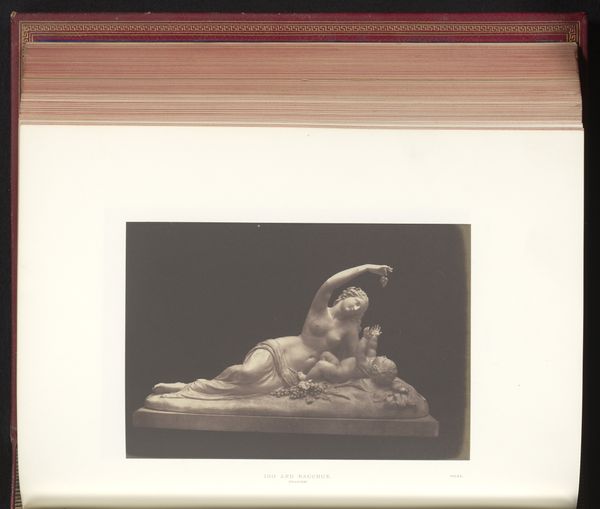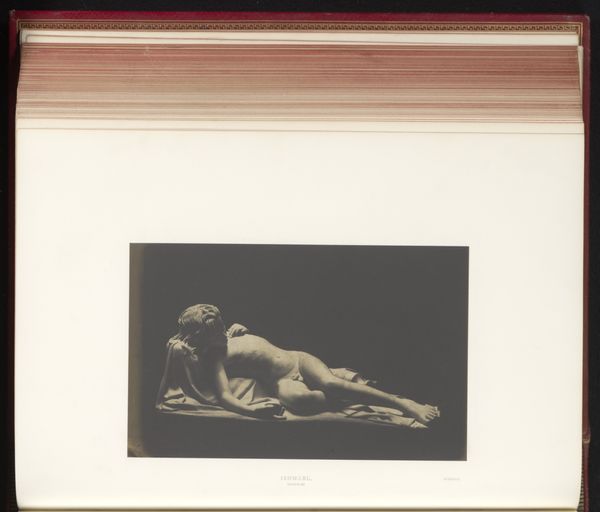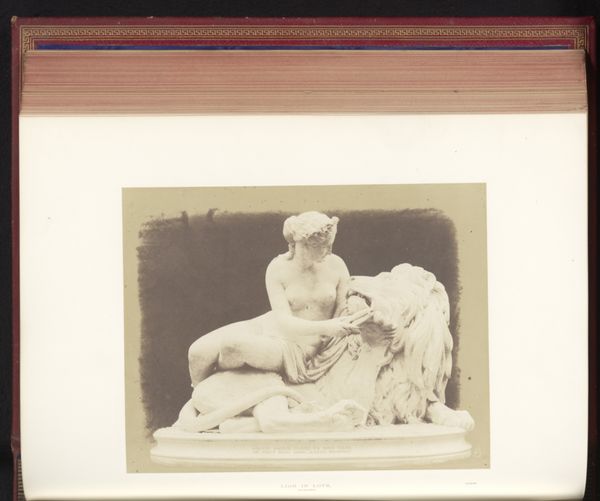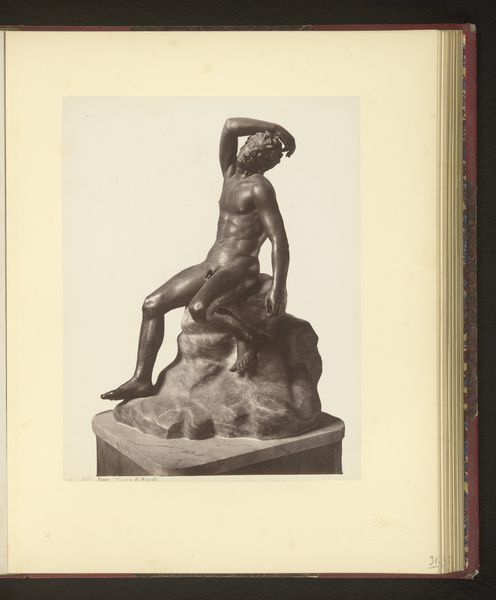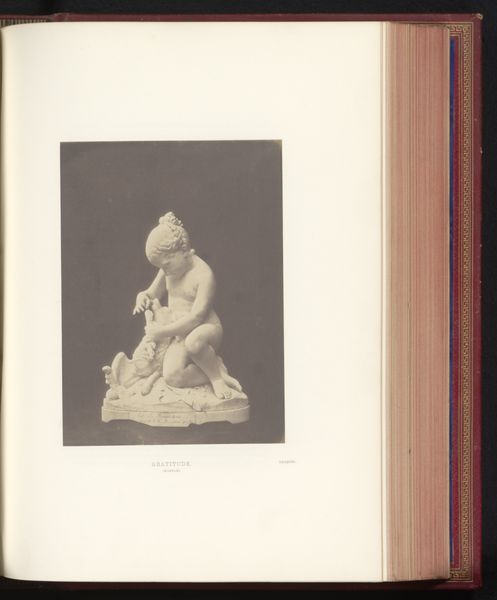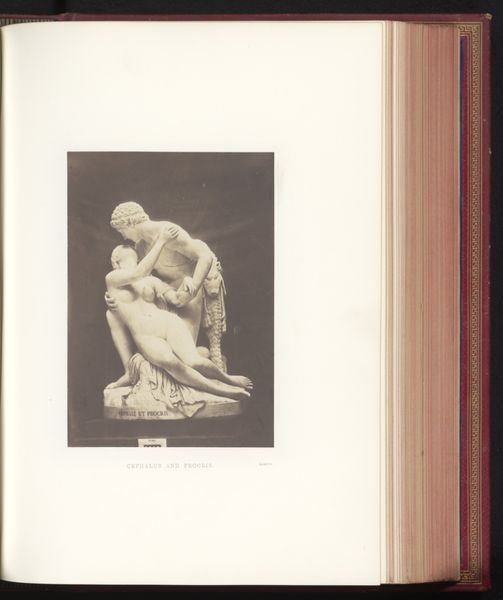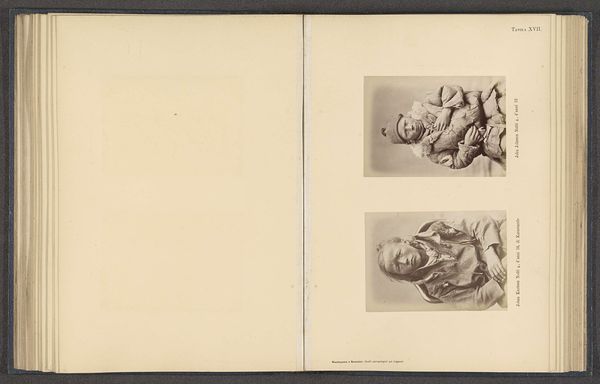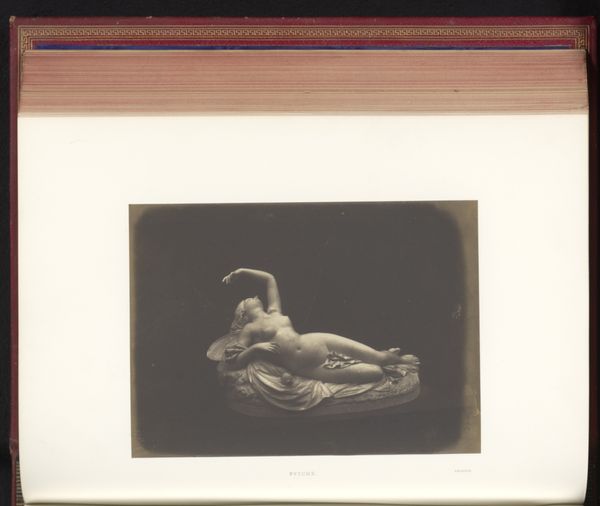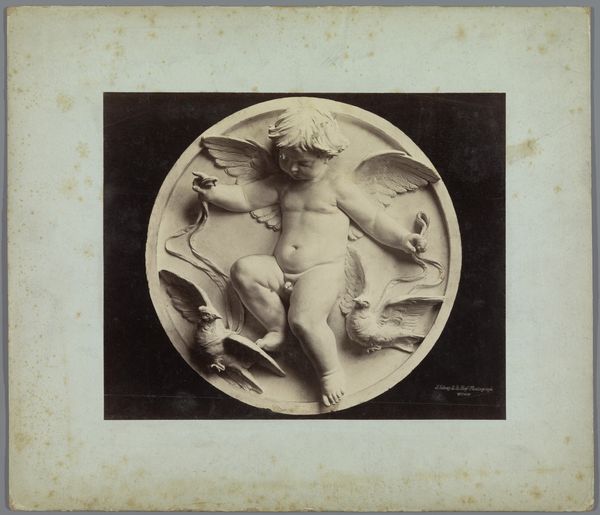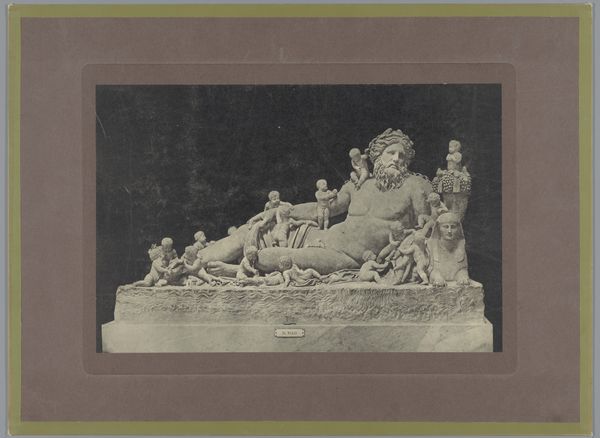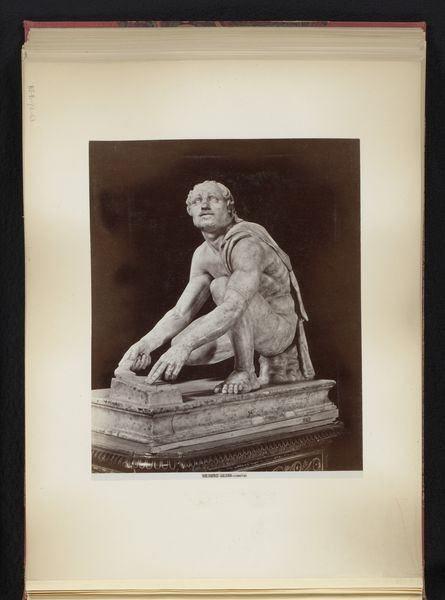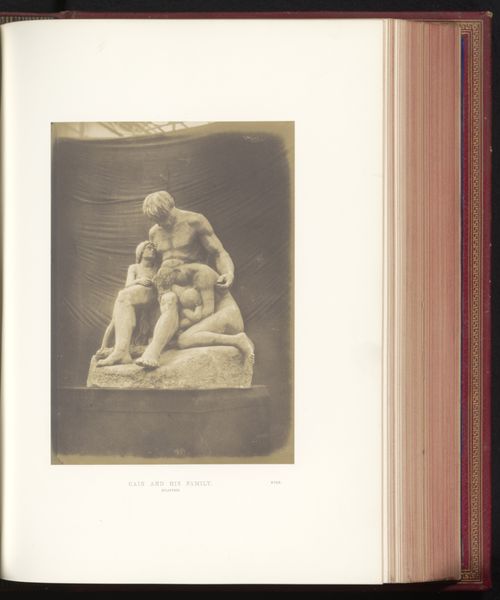
Sculptuur van Arethusa door Frederick Thrupp, tentoongesteld op de Great Exhibition of the Works of Industry of All Nations van 1851 in Londen 1851
0:00
0:00
Dimensions: height 125 mm, width 188 mm
Copyright: Rijks Museum: Open Domain
Editor: Here we have a photograph of Frederick Thrupp’s "Sculpture of Arethusa," showcased at the Great Exhibition in London, 1851. It feels very classical in its composure, yet somewhat melancholic. What captures your attention most about this piece? Curator: Ah, Arethusa. She's reclining, almost exhausted, isn't she? But not without a certain… sensuality, I think. Do you know her myth? She was a nymph, chased by the river god Alpheus. That pose, the way she shields her head – is it rest, or is it lingering fear? I wonder if Thrupp wanted to capture that ambiguity. What do you make of the realism in this classical form? It's an interesting tension, no? Editor: Yes! The realism almost makes the scene more… human. Less like a distant myth, and more like a tangible moment of vulnerability. How does that blend of styles impact the way it was received at the Great Exhibition? Curator: Good question. Think about the time. Victorian England, obsessed with both morality and grand narratives. Here's this nude, classically posed, yet strikingly real. Was it Titillation? Inspiration? Perhaps a little of both. The Great Exhibition was about showcasing innovation, but also, let's be honest, Empire and its aspirations of grandeur, and often looking back at Greek and Roman models. She kind of perfectly embodies that tension between the idealized past and the modern desire for authenticity. Editor: That’s fascinating; a negotiation between virtue and... well, human form. It provides more context to that interesting tension that you brought up earlier. I had not considered how audiences in that moment would be conflicted with how to receive it! Curator: Indeed, she's a marble puzzle! One frozen, fascinating moment with ripples expanding far beyond its initial splash. Editor: Well, I certainly have a new appreciation for Arethusa's complexities, and Thrupp's, after digging into her story.
Comments
No comments
Be the first to comment and join the conversation on the ultimate creative platform.
